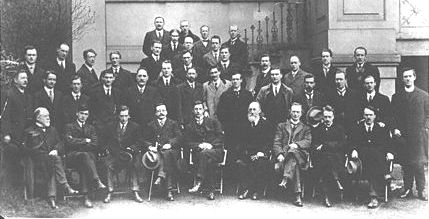The end of WWI on 11 November, 1918 was followed by a general election in December. Ireland at the time was still suffering from post-1916 animosity and restrictions by the British government. The death of one of the many interned Volunteers, Richard Coleman, on 9 December was alleged by Sinn Féin to be indicative of the mistreatment of prisoners. Coleman’s funeral procession through Dublin bought that Republican party valuable support in the coming election. Of the 105 Parliamentary seats contested in Ireland, Sinn Fein won 73, Unionists won 26 and the Irish Parliamentary Party (IPP) won 6. The IPP, which had dominated Irish politics for years, was broken and Sinn Fein grew under the leadership of Eamon deValera and its military wing grew under Michael Collins. In the Island-wide national plebiscite, 74.7% of the people had voted for independence. Home Rule for Ireland within the British Empire was no longer an option; the patriots of 1916 had seen to that! The Irish were now demanding the old dream of a Republic.
Although they had been elected to sit in Westminster, when that Parliament met in January 1919, the newly-elected Sinn Féin MPs were absent. They refused to recognize Westminster, calling it the Parliament of their oppressor and instead they established an independent legislature of their own. They called it Dáil Éireann (Assembly of Ireland) and it was at the Mansion House in Dublin where they defiantly chose to meet! The first meeting of Dáil Éireann took place on 21 January 1919 under the Chairmanship of Cathal Brugha. A new constitution restated the goal of 1916 and established a 5-man executive with Priomh Aire(Prime Minister or President) of Dáil Éireann and four Secretaries. Brugha assumed the Presidency temporarily as deValera was still in prison, Eoin MacNeill became Secretary of Finance, Michael Collins became Minister of Home affairs, Count Plunkett became Minister of Foreign Affairs and Dick Mulcahy became Minister of Defense.
The first meeting of the new Dáil coincided with an unauthorized ambush of a gelignite transport by nine members of the Irish Volunteers’ Third Tipperary Brigade under Sean Tracey and Dan Breen at Soloheadbeg, Co. Tipperary. During the confrontation, two Royal Irish Constabulary (British police) were shot dead. The action signaled the start of the War of Independence.
The members of Sinn Fein’s military wing had decided that they had waited long enough for an acceptable version of the promised Home Rule bill to be implemented and now that the British had altered it to partition Ireland, they knew it would never come. It was time to bring the quest to another level. They hoped that force would compel the British to grant full Independence rather than the altered version of Home Rule.
In 1919, they officially took the title by which they had been popularly referred to all along: the Irish Republican Army (IRA) and started a new phase of Irish history.
